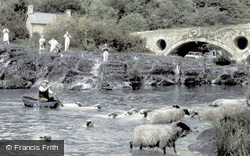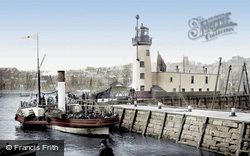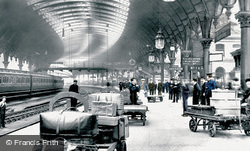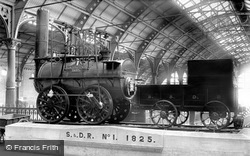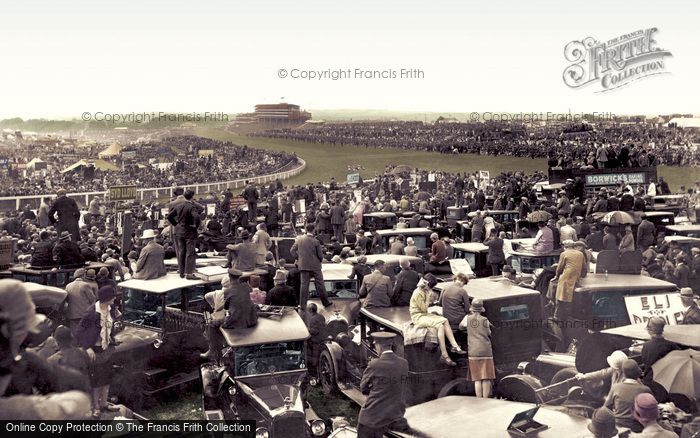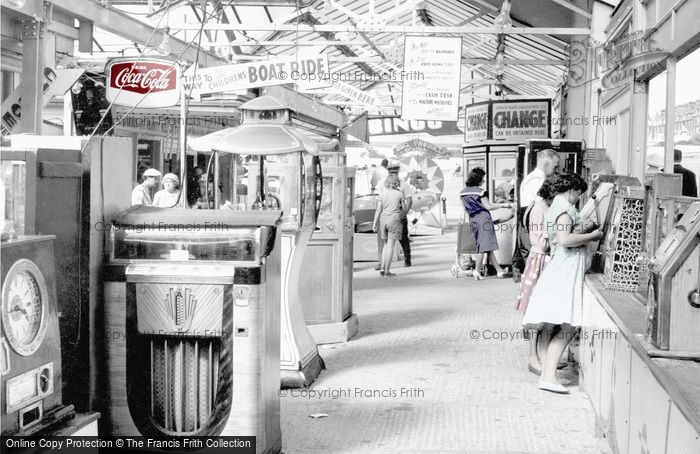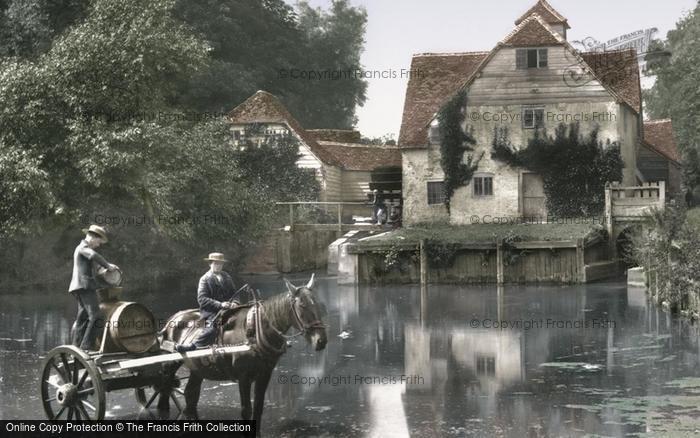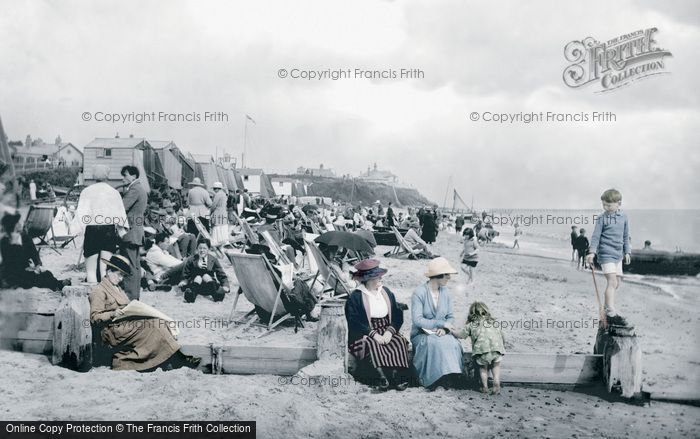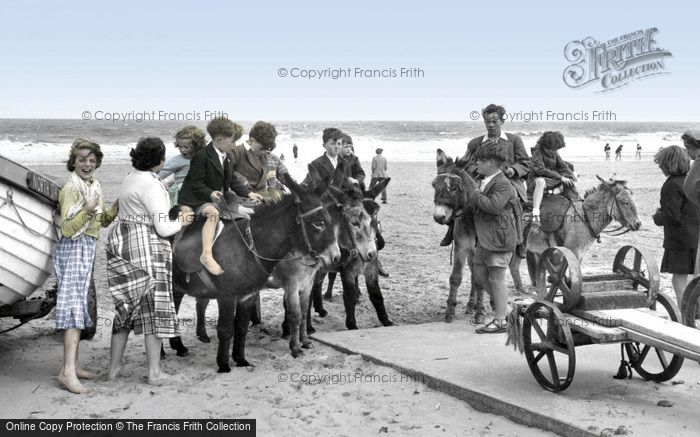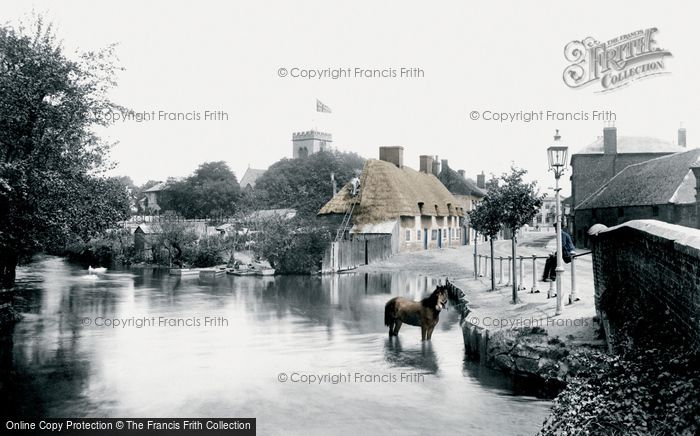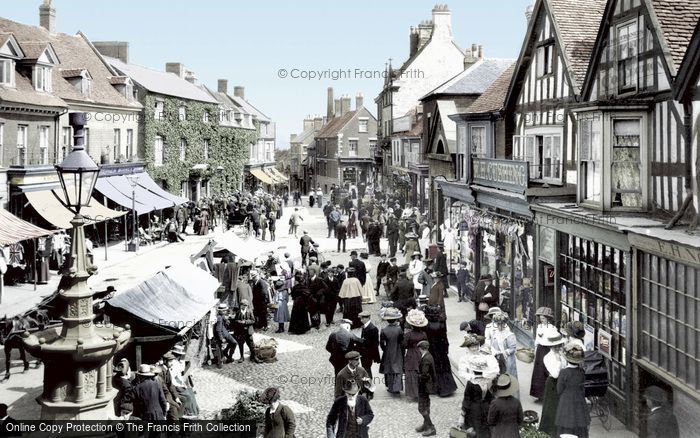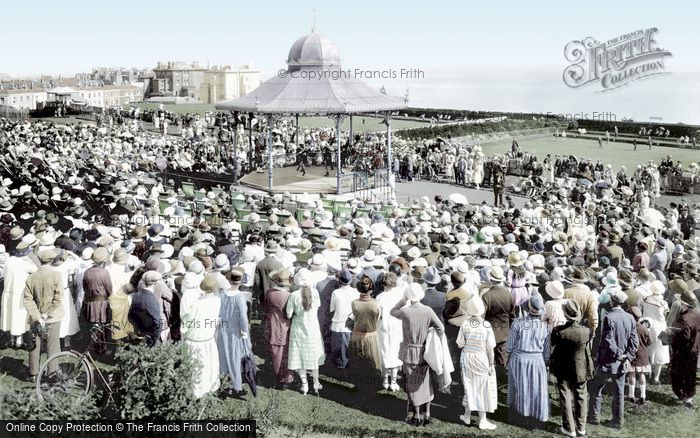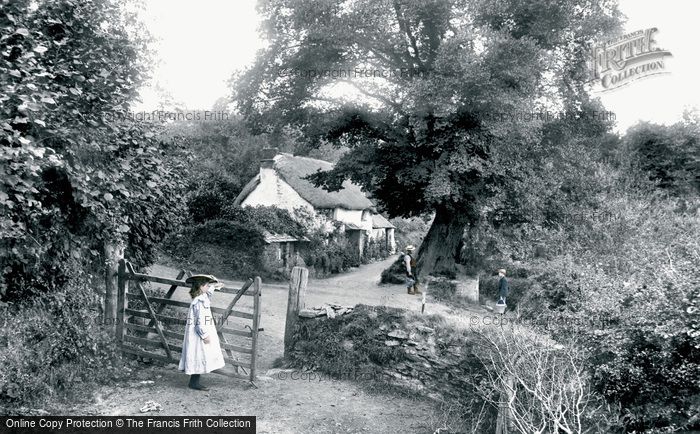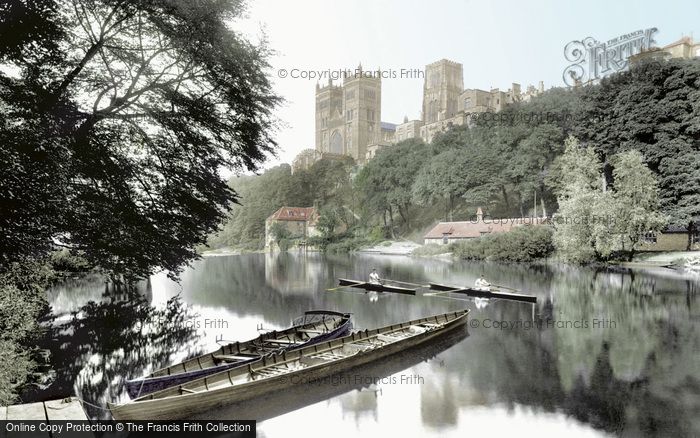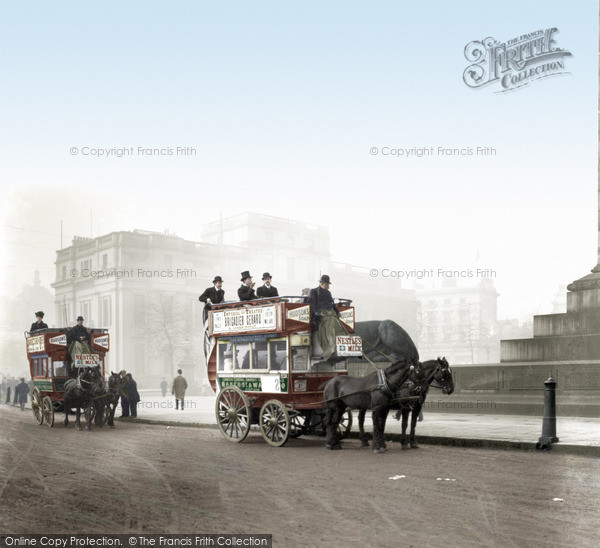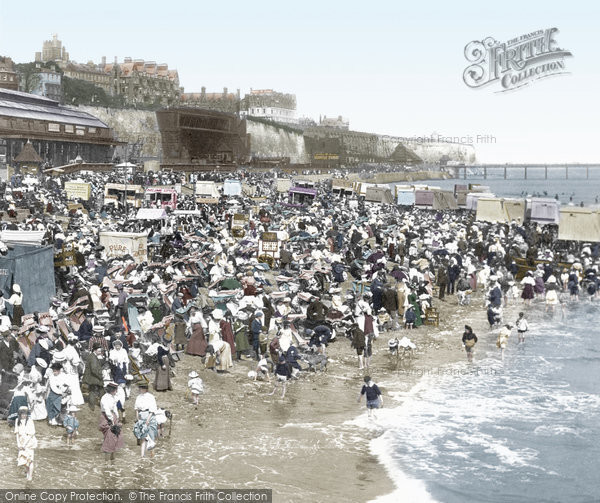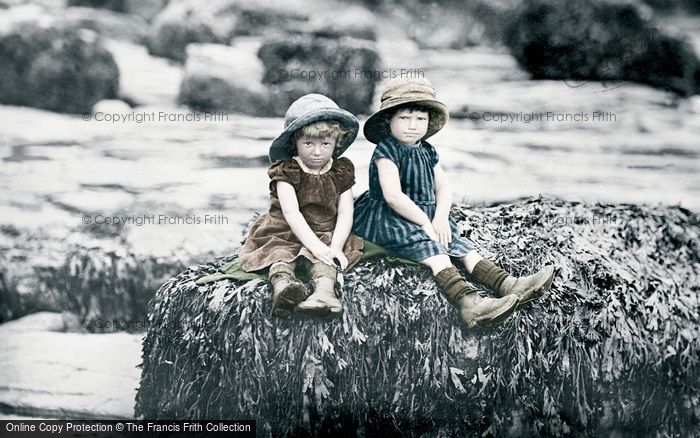A splash of colour!
Published on
April 11th, 2024
We bring you a special selection of favourite Frith photographs that have been brought to life with a splash of colour!
The photographs of The Francis Frith Collection were taken in Black & White as this provided the best archival quality, but many were hand coloured in a Victorian style. Today the work is done digitally but still involves a great deal of artistic skill. Some among the selection below have been spot coloured, where one or a few details in a Black & White photograph have been coloured to add impact or to emphasise a particular feature. We hope you enjoy seeing these today.
"Horse sense is the thing a horse has to keep it from betting on people." - W C Fields. The racecourse buzzes with life and the thrill of the race on Epsom Derby Day in 1928.
The spot-tinting really sets this photograph apart. A red splash of colour on the Coca-Cola sign (bottled in Britain since 1938) and the carefully chosen shades of pastel pink and blue on the teenage girls' clothes are all it takes to make the photo pop with 1950s flare.
Mapledurham's old part-Tudor watermill survives; its waterwheel can be seen in this view. Apart from a lean-to added to the front, the building is remarkably unchanged; a lane leads into the superb village with its great Elizabethan mansion. The hand-colouring of this photograph is so well done it almost looks like an oil painting!
A wonderful photograph from the 1950s of donkey rides on a wind-swept Norfolk beach. The blue and yellow spot-tinting of the clothes of the happy young girl on the left hand side subtly draw you into the photograph so cleverly you can almost feel the fresh breeze on your face and the sand between your toes!
The spot-tinting of this photograph instantly and intentionally brings your gaze to the thatcher. He is busy at work on the roof of a picturesque cottage on the banks of the River Avon, which flows serenely through Ringwood on its way to Christchurch and the sea. Peeping above the trees is the parish church, rebuilt during the 19th century.
Market Drayton's weekly market (every Wednesday) is still famous in Shropshire, drawing people from all over the county. We particularly like the hand coloured version of this photograph that really shows off all the ladies in their wonderfully beribboned hats.
'Oh, I do like to be beside the seaside,
I do like to be beside the sea...
I do like to stroll along the prom, prom, prom,
Where the brass band plays tiddly om, pom, pom...'
No brass band playing today, but the current act upon the bandstand is certainly drawing the crowds on this sunny day in Hastings.
This carefully-posed photograph shows the site of the historic St Keyne's Well, which is situated a little way down a lane from St Keyne village in the East Looe valley of Cornwall. The well is just visible beneath the huge tree, where the man and boy are standing with buckets. Legend tells us that the Celtic princess St Keyne bestowed a special power on this well, to the effect that whichever one of a newly married couple drank its water before the other would be the master of the marriage. The legend was immortalised in a work by the 19th century poet Robert Southey, in which one unfortunate husband rushed to the well straight after his wedding ceremony to find that he had been out-manoeuvred by his quick-witted wife - she had already drunk from a bottle of well water that she had taken with her to the church!
A serene scene with the massive and magnificent Durham Cathedral dominating the landscape. The River Wear, once a vital part of the city's defences, is now used for more pleasurable purposes. We love the greens used to colour this photograph, and particularly enjoy the beautiful reflections that were captured by the photographer thanks to the calm waters that day.
The bus, on the its way from Baker Street to Waterloo, has stopped behind Nelson's Column. The hand colouring of the photo allows us to more clearly read the large advertisement on the side for a Conan Doyle play at the Imperial Theatre, which was built on the site of Westminster Central Hall. Behind the bus is the Union Club, now Canada House.
Taken from the end of the pier, this photograph shows an incredibly busy and prosperous Ramsgate! Such a crammed photograph would certainly have taken time to hand colour, but we think you'll agree it has been beautifully done.
This image is shown here with its original title from the Frith archive of 'Gemini' - and information received by The Francis Frith Collection from a family descendant explains why, as the two children perched precariously on a seaweed-covered rock on the beach at Whitby in Yorkshire are twins. However, all is not as it seems! Although they are wearing dresses, they are actually two boys, Matthew and Robert Peart, from a local fisherfolk family that is still well-known in the town. Children in poor families in the past were clothed in whatever was available, and it was not unusual for small boys to wear hand-me-down dresses passed on from older siblings.
Perhaps you'd like..?
If you liked our "A splash of colour!" Blog Feature, you might like to see and follow this
Francis Frith board over on Pinterest.
This post has the following tags:
Archives,Web,Nostalgia.
You may find more posts of interest within those tags.
Join the thousands who receive our regular doses of warming nostalgia!
Have our latest blog posts and archive news delivered directly to your
inbox.
Absolutely free. Unsubscribe anytime.
